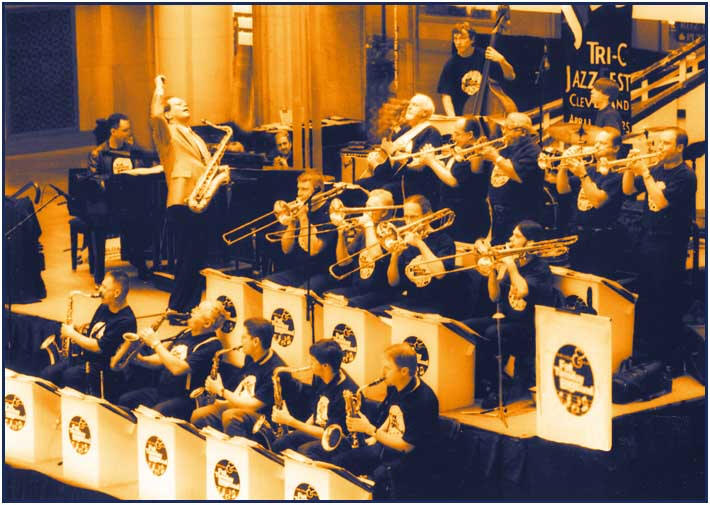We Love The Big Bands

A standard 17-piece instrumentation evolved in the big-bands, for which many commercial arrangements are available. This instrumentation consists of five saxophones (most often two altos, two tenors, and one baritone), four trumpets, four trombones (often including one bass trombone) and a four-piece rhythm section (composed of drums, acoustic bass or electric bass, piano and guitar).
However, variants to this instrumentation are common. Composers, arrangers, and bandleaders have used sections with more or fewer players, and additional instruments, such as valve trombone, baritone horn/euphonium (both of which are usually used in place of or with trombones), vibes, bass clarinet, French horn, tuba, banjo, accordion and strings (violin, viola, cello). Male and female vocalists have also joined big bands to perform particular arrangements. In recent years synthesizers and / or electronic keyboards have been added, often replacing the piano.
Some arrangements call for saxophone players to double on other woodwind instruments, such as flute, clarinet, soprano sax, or bass clarinet. Trumpet and trombone players are sometimes called upon to use various sound-changing mutes, and trumpet players sometimes need to play flugelhorn. In some rhythm sections, a guitar player is omitted. Players in the rhythm section may be called upon to play acoustic or electric instruments. Latin or other auxiliary percussion instruments may be added, such as cowbells, congas, tambourines, or triangles.